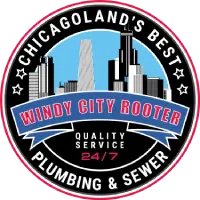Homeowners often take their plumbing for granted until something happens that needs immediate attention. A kitchen sink stops running or a toilet overflows and then the plumbing becomes a high priority. With a little preventative maintenance, homeowners would never need to deal with plumbing emergencies. Here is how you can make sure their drains are always working properly.
The Nightmare of Cleaning a Clogged Drain in Antioch
By not spending some time to maintain the drainage system in the home, a person opens themselves up to several unfortunate realities. When any problems in the drains occur, a homeowner can experience:
- an increase in utility bills
- plumbing fixtures that wear out sooner
- decreasing levels of sanitation in the house
- unpleasant odors and strange sounds from the drains
All of this increases the stress of being a homeowner. This can be prevented with a little DIY home plumbing maintenance.
Benefits to Proactive Drain Maintenance
For a small investment of time and effort on their drains, the homeowner gains much throughout the year. The benefits include:
- utility bills are lower
- longer lasting plumbing fixtures
- less spent on plumbing fixture repairs
- reduced risk of overflowing toilets and clogged sinks
- more comfortable and sanitary living space
This is especially important in large households where several people may contribute to the drains becoming clogged. The more people living in the house, the higher the risk of a drain problem if regular maintenance is not performed.
Plumbing Maintenance for the Homeowner
There are a number of ways that a homeowner can ensure that their drains are in proper working order. None of these take much time and are easy for any person to do. The first step is maintaining the drains to prevent them from stopping up. Next, one should be ready in case a clog does develop so they can react quickly to clear the drain.
Preventative Maintenance Steps
These actions will help to prevent clogs from happening:
- Pour a mixture of baking soda and vinegar down the drain. Let it set for several minutes and then flush thoroughly with warm tap water.
- Pour boiling water from a pan or tea kettle down the drain to clear out any sticky grease that has adhered to the inside of the plumbing pipes.
- Purchase small strainers that fit in the drains to catch items before they get down into the plumbing.
- Keep a container near the stove to pour used oil and grease into. Never pour these down a drain.
In case a drain blockage happens, the homeowner should have on hand:
- A standard plunger for flat drains, such as in the kitchen sink.
- A flange plunger for curved drains, such as in the toilet.
- A bucket and several old rags for cleanup.
Typical Drain Clogs
If a clog should occur, a homeowner can try to clear it out themselves. Their success depends on the type of clog they encounter. There are two clogs a homeowner is likely to face:
Soft clog – This is made up of hair and skin cells and is usually found in bathroom sinks, tub and shower drains. The clog stays soft and rarely compacts in the drain. These are normally easy to remove.
Hard clog – This is caused by grease and foods sticking to the sides of the drain pipe. Once the clog accumulates enough material to completely block the drain, it will continue to compact itself in the drain and become a hard mass. The longer a hard clog sits, the hard it is to remove.
Removing a Soft Clog
These clogs can often be removed by the homeowner.
- Use a standard plunger to pull the clog up out of the sink or to push it on through the drain pipe.
- Use a long, stiff brush made to fit down into the drain, snag the clog material and pull it back up and out.
- Use a plastic strip with serrated edges, made to remove clogs, by being inserted into the drain and pulling out the material.
- If the homeowner is not intimidated by plumbing work, they can disconnect the P-trap below the bathroom sink and remove the clog lodged there.
Removing a Hard Clog
If here is standing water, use a wet and dry vacuum to remove all of the water before attempting to unclog the drain.
- Try using a standard plunger briefly to release a fresh clog. Do not do this for too long or too forcefully as it can damage the plumbing pipes and make them come apart.
- Pour dish detergent down a clogged toilet to loosen up a blockage there.
- Use a plumbing snake to break up the clog and clear the drain. These should be used carefully as they can puncture a hole in the side of old, rusty plumbing pipes or cause drain pipes to come apart where two are joined.
Drain Cleaning Techniques to Avoid in Antioch
Chemical drain cleaners – These are very dangerous to work with and can damage a person’s skin and eyes should they splash onto them.
Water balloons – These devices fit onto the end of a garden hose and are slipped down into the drain. When the water is turned on, it expands the balloon, sealing it against the sides of the drain pipe. Water is then forced down into the drain to try to loosen the clog. These devices can easily break plumbing fixtures or cause them to come apart.
Many household drain clogs can be dealt with by the homeowner. If they prove resistant to several attempts, a professional drain cleaning service should be considered. They can remove any clog without damaging the existing plumbing.
If you need drain cleaning in your Antioch home, call the experts at Windy City Rooter to schedule your service!

